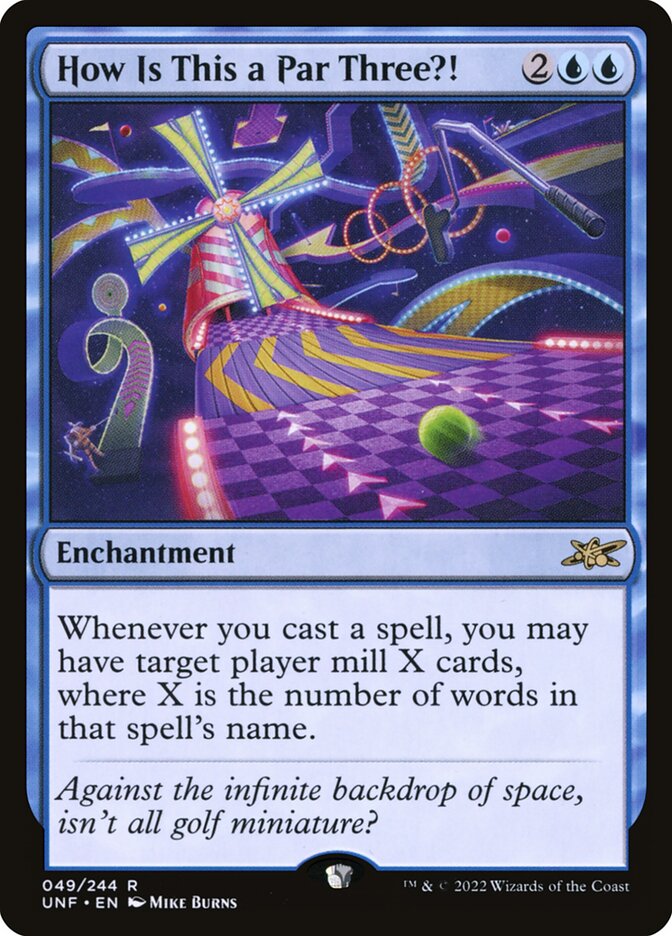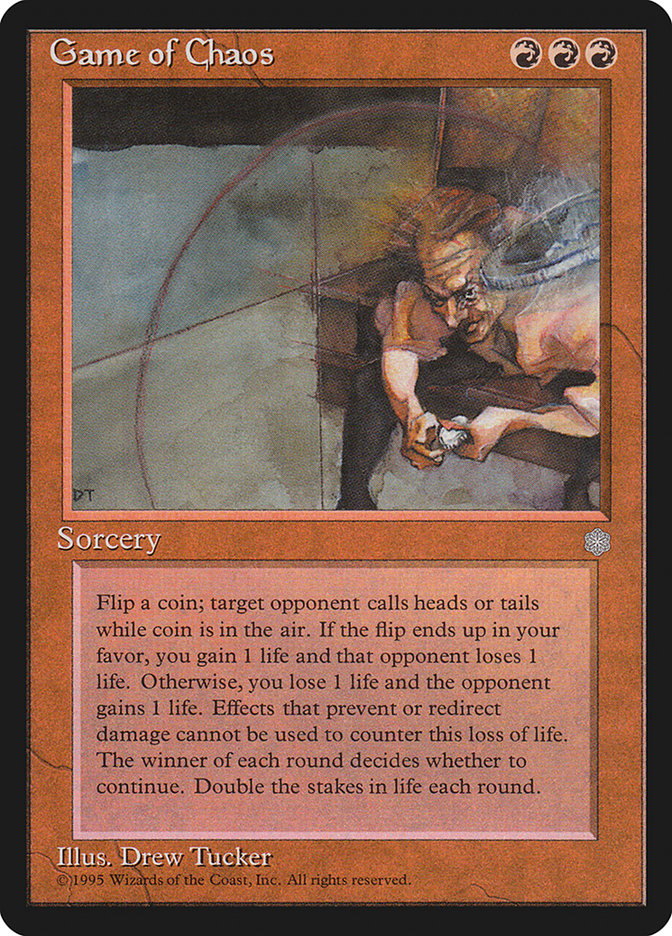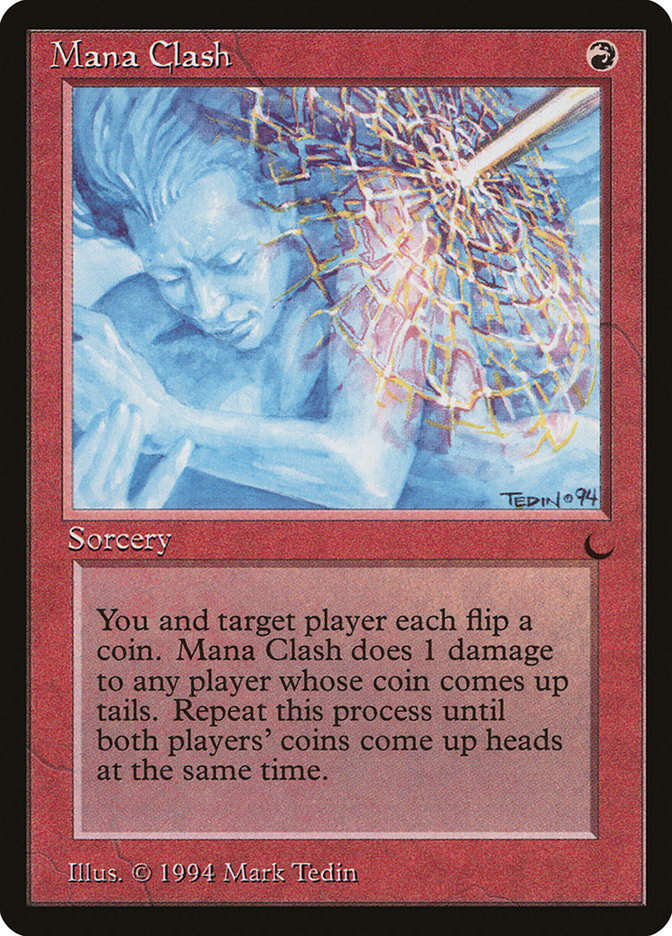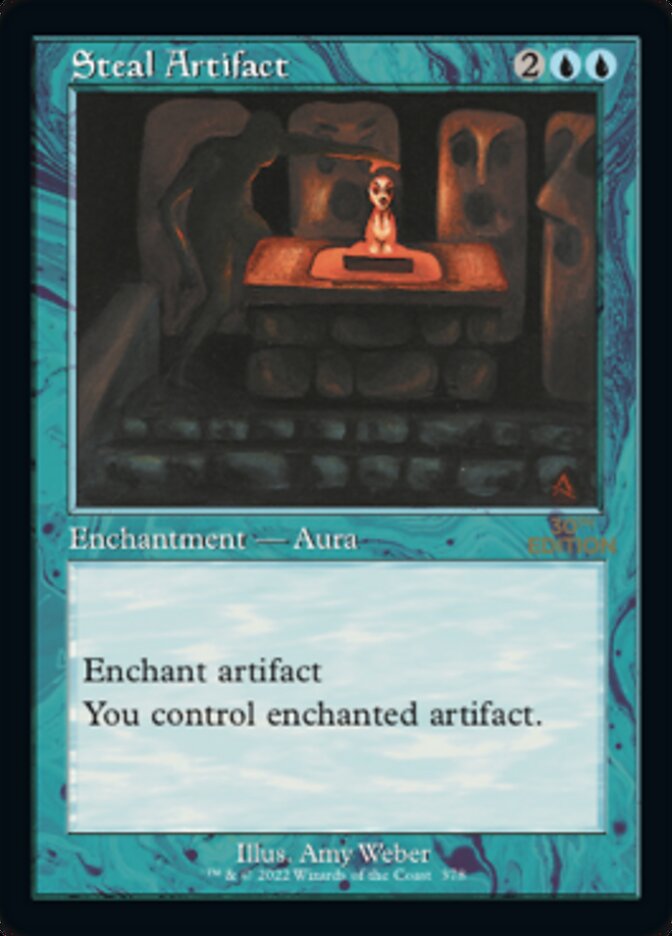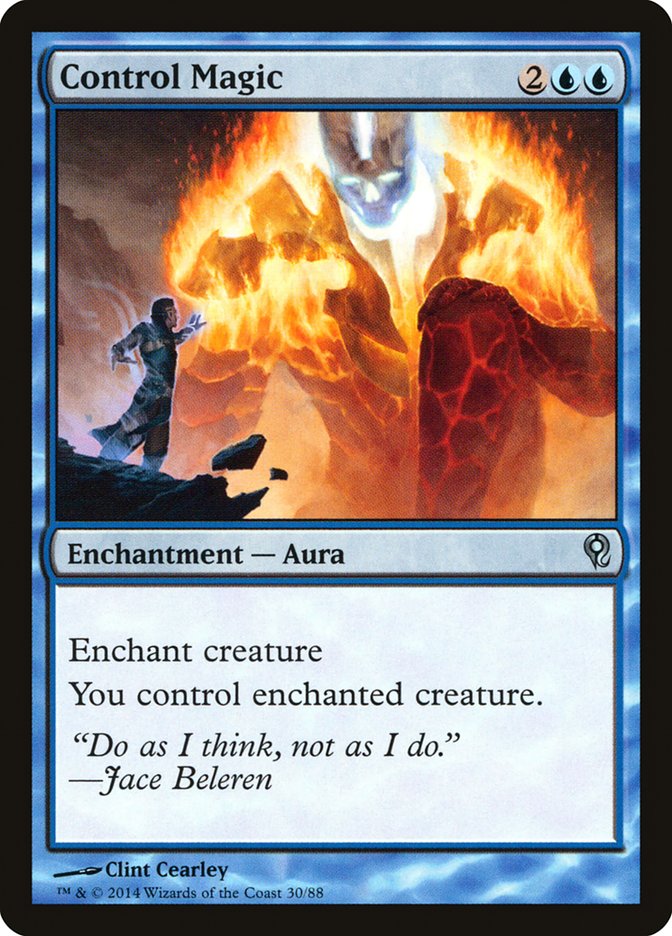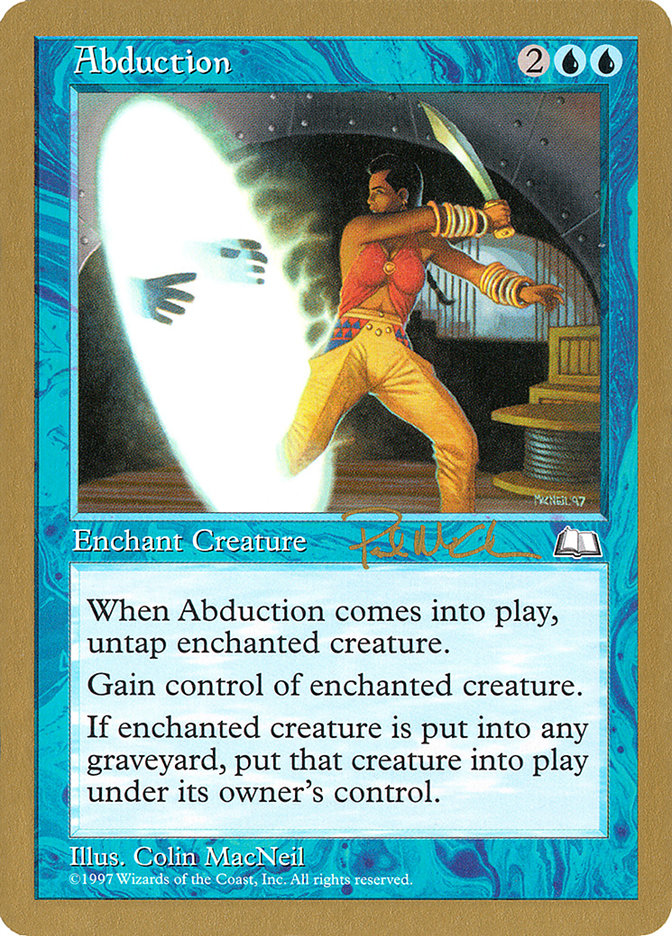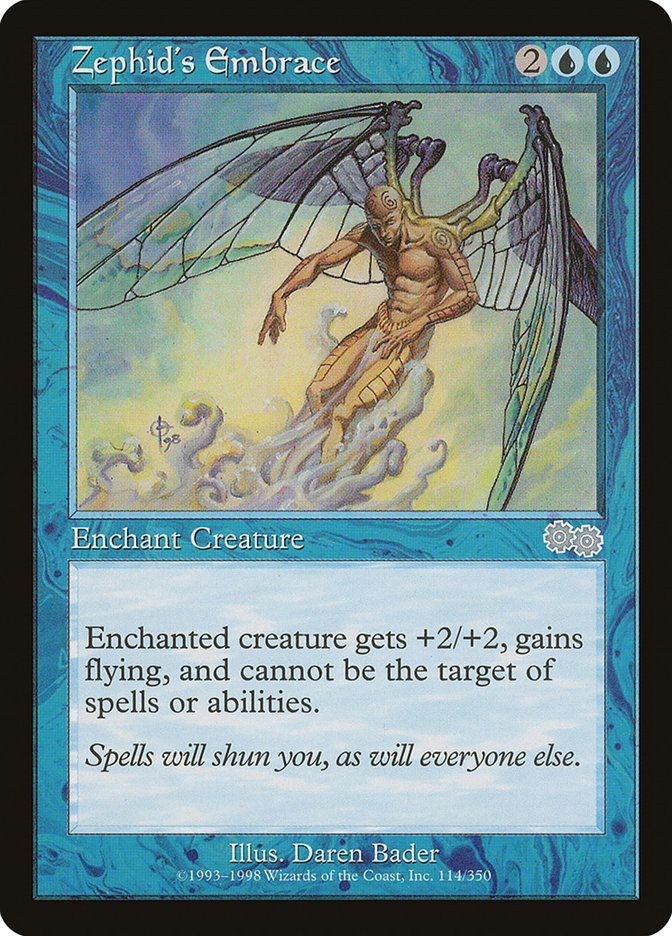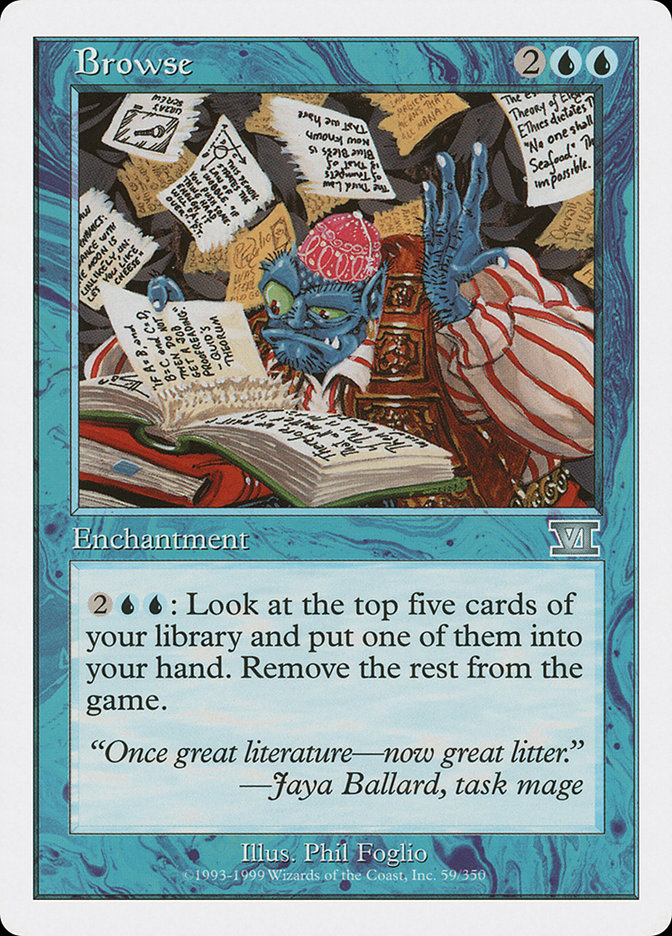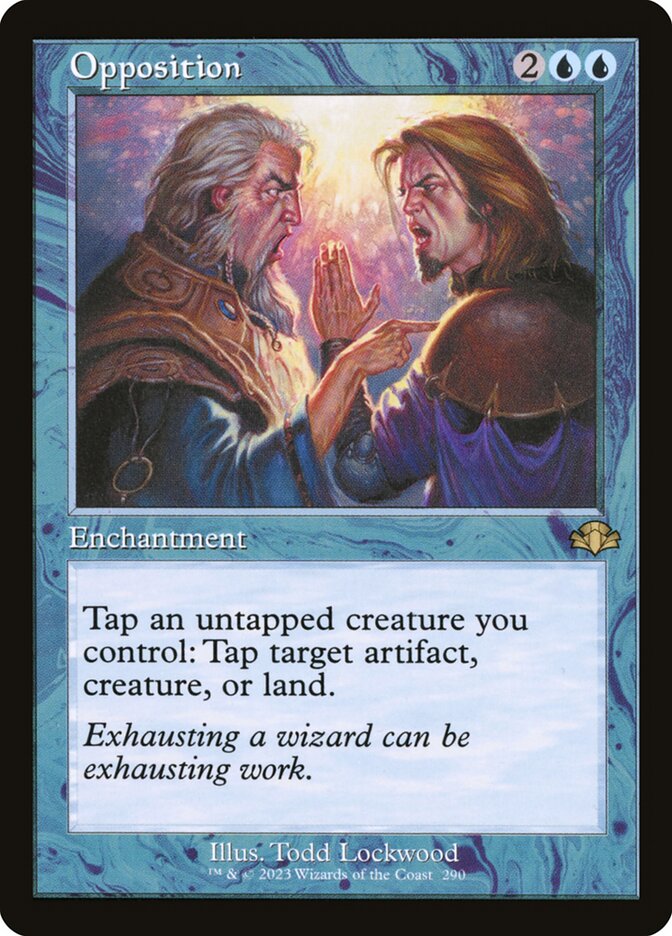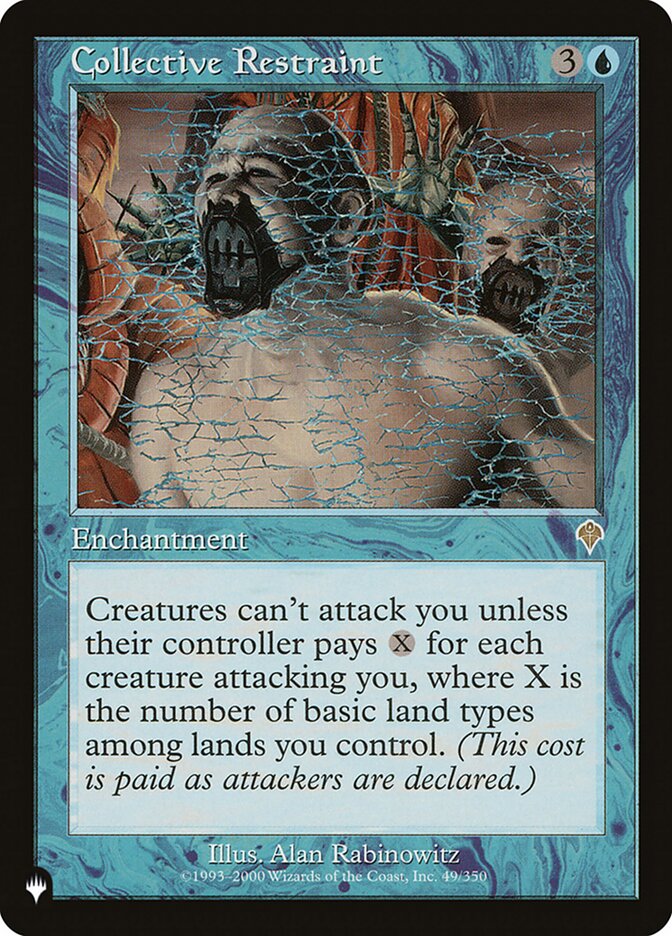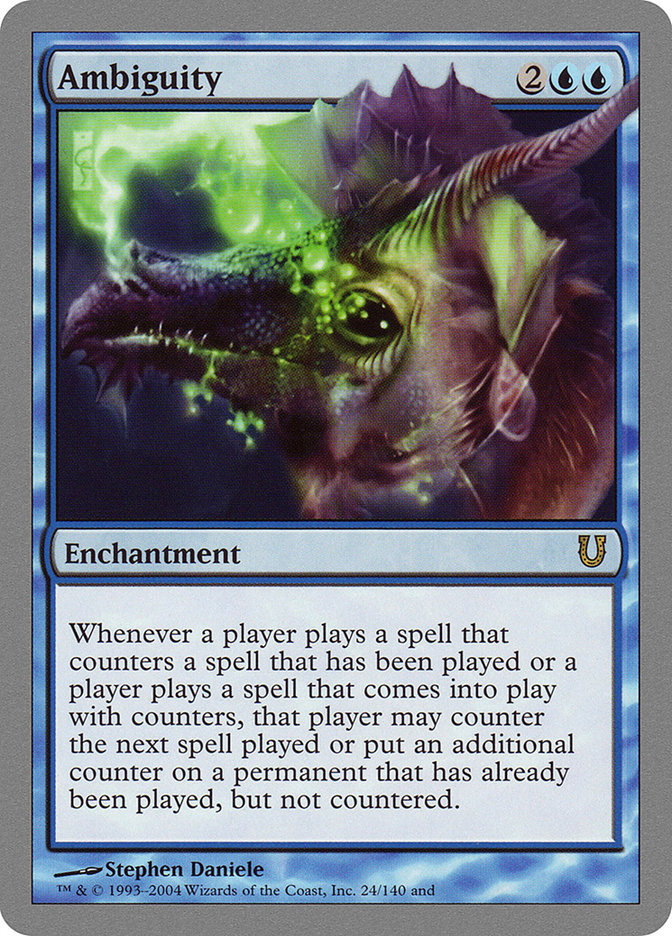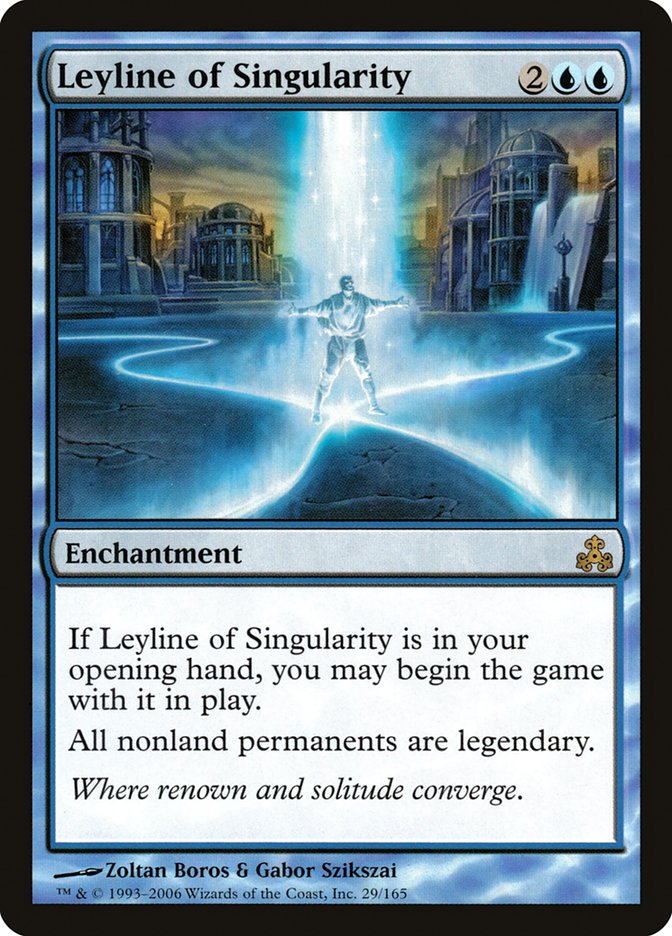How Is This a Par Three?! MTG Card
Text of card
Whenever you cast a spell, you may have target player mill X cards, where X is the number of words in that spell's name.
Against the infinite backdrop of space, isn't all golf miniature?
Cards like How Is This a Par Three?!
How Is This A Par Three?! introduces a unique twist to challenge creation in MTG. The card bears a resemblance to Game of Chaos in that both involve a repetitive process that potentially escalates with each round. Yet, How Is This A Par Three?! stands out because it restricts players to using only creature spells for the challenge, while Game of Chaos relies on coin flips without such limitations.
Goblin Game presents another parallel, as it also creates a sub-game, requiring players to hide items and wager on outcomes. Nonetheless, How Is This A Par Three?! maintains a specificity in its challenge type, whereas Goblin Game has a more random and unpredictable approach. And when compared to Mana Clash, which has a randomness factor as it involves flipping coins until a player loses, the foresight and strategy involved in How Is This A Par Three?! are more pronounced given its creature-based requirement.
Each of these cards offers playful interaction, but How Is This A Par Three?! adds a structured competitive layer, making creature spells the stars of the show and setting itself apart as a distinctive option for strategic duels in MTG.
Cards similar to How Is This a Par Three?! by color, type and mana cost
Card Pros
Card Advantage: Crafting a strong strategy in Magic the Gathering often hinges on your ability to maintain card advantage. “How Is This a Par Three?!” shines in this aspect, as it offers a unique twist by allowing a player to pull an additional card from their library when the right conditions are met. This can be a pivotal moment in a match, potentially tipping the balance in favor of the player who efficiently leverages this draw ability.
Resource Acceleration: In the dance of lands and mana, “How Is This a Par Three?!” accelerates the rhythm for its caster. By converting in-game actions into a surge of resources, this card can rapidly change the pace of the game. The boost in resources can provide the necessary edge, enabling more powerful spells to be cast earlier than usual, setting the stage for a commanding lead.
Instant Speed: Timing is crucial in the world of MTG, and the instant speed of “How Is This a Par Three?!” adds a layer of tactical depth to any match. This characteristic allows players to adapt on the fly, keeping opponents guessing and finding opportunities to maximize the card’s potential. Whether it’s during the tension-filled final moments of an opponent’s turn or in response to an unexpected threat, the instant nature of this card provides flexibility that can be leveraged to great effect.
Card Cons
Discard Requirement: With How Is This a Par Three?!, you are obliged to discard two cards. This condition might leave you cornered, especially if your hand is already depleting. It’s crucial to weigh this cost against your current hand size and game strategy before playing.
Specific Mana Cost: This card necessitates three green mana, which can pose a deck-building challenge. If your MTG deck isn’t heavily green or optimized for such a mana spread, consistently casting this could be problematic.
Comparatively High Mana Cost: At three green mana for a singular effect, the cost of this card may appear steep, particularly when measured against other cards with similar effects. Savvy players often prefer options that provide more flexibility or additional advantage for the same cost.
Reasons to Include in Your Collection
Versatility: The card ‘How Is This a Par Three?!’ offers a great deal of flexibility to your deck. It can become a utility card, adapting to varying situations, and thus, it finds a place in diverse builds, ready to surprise opponents at a moment’s notice.
Combo Potential: This card can serve as an essential link in several combo chains. Its unique mechanics may enable unexpected synergies, not only advancing your game state but potentially disrupting your opponent’s rhythm.
Meta-Relevance: In a game where the meta is ever-evolving, ‘How Is This a Par Three?!’ holds potential to adapt and challenge prevailing deck archetypes. It could provide an edge against the latest competitive decks, keeping your collection current and dynamic.
How to beat
How Is This a Par Three? is a trickster’s dream in Magic: The Gathering, beckoning players into a game of chance with a potentially high payoff. It draws a parallel with Risky Move, a card that plays with probability, yet Risky Move is notorious for its potential to backfire. How Is This a Par Three? offers a choice but brings its own kind of risk to the green, handing the reins of fate to your opponent.
Similarly, Goblin Game presents a guessing game with potentially high stakes, but lacks the direct thematic tie-in to golf that adds whimsy to How Is This a Par Three? While the thrill of uncertainty is shared across these cards, the golf card is unique in its ability to introduce an element of sporting fun into the magic duels.
When confronting such an unpredictable card, smart play is crucial. Understanding odds, strategic baiting, and psychological insight are keys to outsmarting an opponent’s use of How Is This a Par Three? In a game where control and strategy often reign supreme, this card reminds us that sometimes, taking a gamble can yield unexpected victories—or surprising defeats.
Where to buy
If you're looking to purchase How Is This a Par Three?! MTG card by a specific set like Unfinity and Unfinity, there are several reliable options to consider. One of the primary sources is your local game store, where you can often find booster packs, individual cards, and preconstructed decks from current and some past sets. They often offer the added benefit of a community where you can trade with other players.
For a broader inventory, particularly of older sets, online marketplaces like TCGPlayer, Card Kingdom and Card Market offer extensive selections and allow you to search for cards from specific sets. Larger e-commerce platforms like eBay and Amazon also have listings from various sellers, which can be a good place to look for sealed product and rare finds.
Additionally, Magic’s official site often has a store locator and retailer lists for finding Wizards of the Coast licensed products. Remember to check for authenticity and the condition of the cards when purchasing, especially from individual sellers on larger marketplaces.
Below is a list of some store websites where you can buy the How Is This a Par Three?! and other MTG cards:
 BUY NOW
BUY NOW BurnMana is an official partner of TCGPlayer
- eBay
- Card Kingdom
- Card Market
- Star City Games
- CoolStuffInc
- MTG Mint Card
- Hareruya
- Troll and Toad
- ABU Games
- Card Hoarder Magic Online
- MTGO Traders Magic Online
See MTG Products
Printings
The How Is This a Par Three?! Magic the Gathering card was released in 1 different sets between 2022-10-07 and 2022-10-07. Illustrated by Mike Burns.
Rules and information
The reference guide for Magic: The Gathering How Is This a Par Three?! card rulings provides official rulings, any errata issued, as well as a record of all the functional modifications that have occurred.
| Date | Text |
|---|---|
| 2022-10-07 | If X is greater than the number of cards in the targeted player’s library, you can’t choose to have them mill any cards. This is because if you are given a choice and one of the options is impossible, you can't choose the impossible option. (That means you should make sure to cast Our Market Research Shows That Players Like Really Long Card Names So We Made this Card to Have the Absolute Longest Card Name Ever Elemental before their library gets too small.) |
